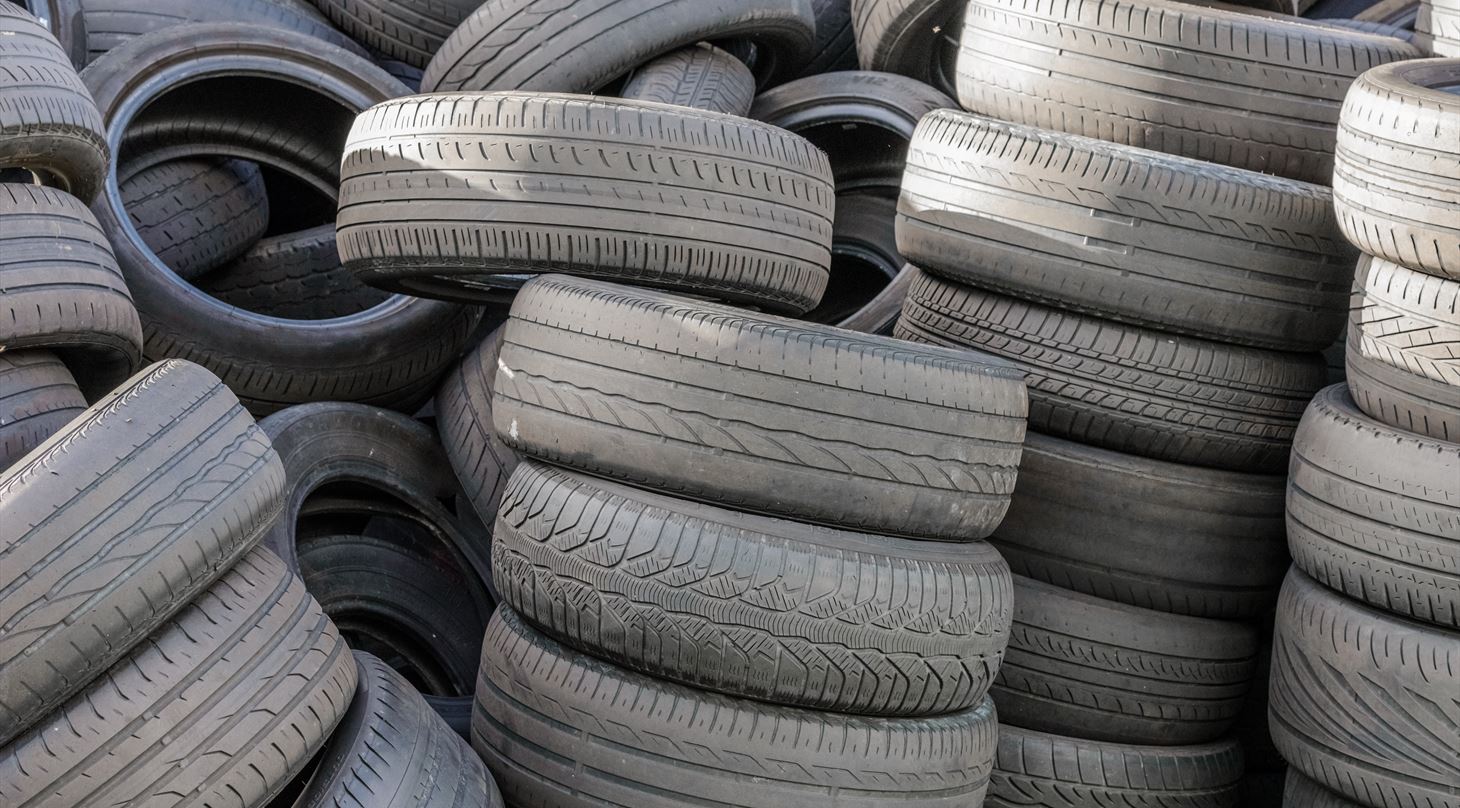
New partnership to improve recycling of end-of-life car tires
Press release published 15th. May 2023.
An international partnership will pave the way for tire-to-tire recycling of carbon black, which makes up a quarter of the material in car tires. The material could also be used in other products that currently contain fossil-based carbon black.
Every year, around one billion car tires are discarded worldwide, often ending up in landfills and incinerators. However, a proportion of used tires are downcycled for other purposes, such as asphalt fill, playground and athletics track surfaces or rubber granulate for artificial turf. The latter has recently been banned by the EU.
One of the barriers to making end-of-life tires more recyclable is the quality of the carbon black that all tires contain, which makes up a quarter of the content of a car tire.
- Even though we are good at recycling end-of-life tires in Europe, the materials are being downcycled and globally we are facing a huge waste problem. In this partnership, we want to pave the way for increased circularity by improving the quality of carbon black from end-of-life tires so that it can be used to an even greater extent in the production of new tires and other rubber products, says Aisha Rafique Project manager, Danish Technological Institute.
Specifically, the goal is to increase the proportion of recycled carbon black in new tires from the current 10% to 40%.
The technology is ready
The project is based on a new and patented technology developed by the Canadian company Environmental Waste International. The technology, called Reverse Polymerization (RP), which utilizes heat and microwave energy, breaks down the chemical bonds in end-of-life tires. The output of the process is oil, metal, and carbon black, the substance that contributes to a tire's wear resistance - and its characteristic black color.
Environmental Waste International has conducted pilot-scale tests showing that recycled carbon black from their RP process is of significantly higher quality than that obtained from other methods such as classic pyrolysis. However, the quality of recovered carbon black is not yet high enough to fully meet tire manufacturers’ requirements. This has been a key reason for bringing together a broad partnership that can jointly develop implementable solutions.
In addition to Danish Technological Institute, which will develop purification and upcycling methods for carbon black, and Environmental Waste International (Canada), the consortium consists of the Danish rubber manufacturer Kiso A/S, the Finnish tire manufacturer Nokian Tyres and the Danish WindSpace Group ApS who is heading the project.
Recycling plant in Denmark
The project runs until 2025, when WindSpace Group ApS plans to build the Elysium Nordic plant in Nyborg. The plant will use the patented RP technology to convert end-of-life tires into high-quality recycled carbon black.
- The goal is that companies like Nokian can significantly increase the proportion of recovered carbon black in their future tires, and that companies like Kiso can use it in rubber products for the wind industry, construction, and the transport sector, among others. This will be a significant step towards a new closed material cycle, which we are proud to be at the forefront of," says CTO Rune Blæsbjerg from Windspace Group ApS.
The project “Development of environmental technologies for circular recycling of carbon black from tire pyrolysis” is supported by MUDP under the Danish Ministry of Environment.
Facts
Carbon black - a reinforcing filler and a pigment product - makes up about a quarter of the material in a car tire, where it improves wear resistance and durability. Carbon black is also used in other plastic and rubber-based products such as plastic enclosures, batteries, cables, conveyor belts, and as a colorant in textiles and coatings.
In Europe, around 95% of all end-of-life tires are collected - equivalent to 3.55 million tons. Of this, 40% is incinerated for energy recovery, while 52% is recycled for other purposes, including the production of rubber granulate and a smaller part for cement and asphalt production.
(Source: ETRMA)
For more information, please contact
Aisha Rafique, Project Manager (PhD), Danish Technological Institute, mail: araf@dti.dk,
mobile: +45 7220 2336.